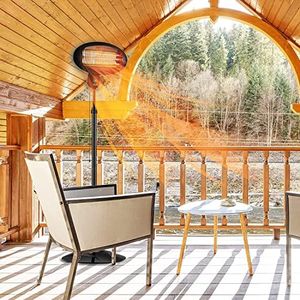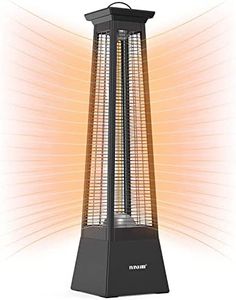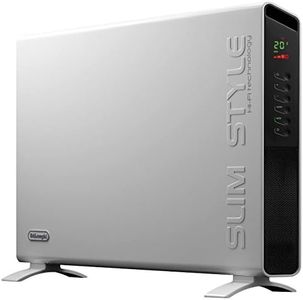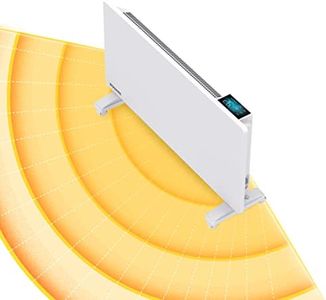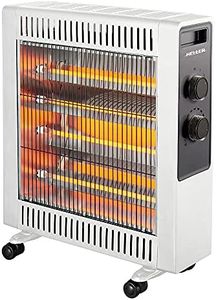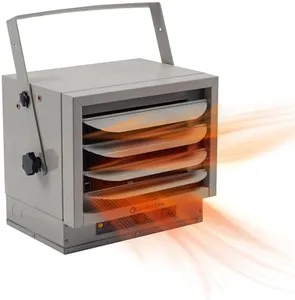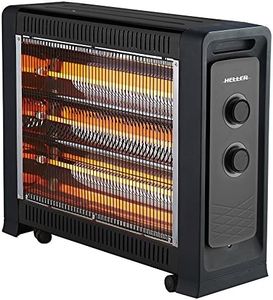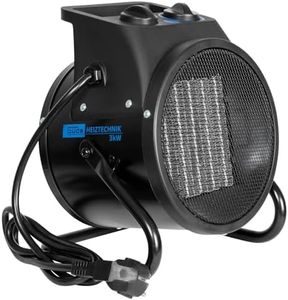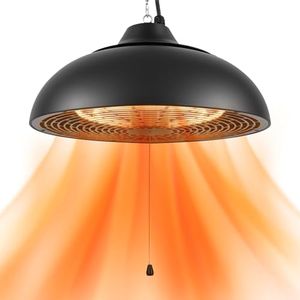We Use CookiesWe use cookies to enhance the security, performance,
functionality and for analytical and promotional activities. By continuing to browse this site you
are agreeing to our privacy policy
10 Best Electric Garage Heaters
From leading brands and best sellers available on the web.Buying Guide for the Best Electric Garage Heaters
Choosing an electric garage heater is about balancing warmth, safety, and efficiency for your unique space. Before buying, consider the size of your garage, how insulated it is, and whether you’ll use the heater occasionally or for long periods. A good heater should provide enough warmth without wasting energy, and it should be straightforward to install and operate safely. Understanding the main features will help you select a model that keeps your garage comfortable all year round.Heating Capacity (BTU/Watts)Heating capacity tells you how much heat the heater can produce and is usually measured in BTUs (British Thermal Units) or watts. This is important because it determines how effectively the heater can warm up your garage space. Small, insulated garages may only need a heater with a lower capacity, while larger or poorly insulated spaces require more powerful units. Generally, segmenting by size: small garages (up to 250 sq ft) often need 4,000–6,000 watts or 13,600–20,500 BTU, medium garages (250–500 sq ft) might need 6,000–9,000 watts or 20,500–30,700 BTU, and large garages (over 500 sq ft) often need even more. Match the capacity to your specific space size and insulation level for the best efficiency.
Mounting Style (Portable or Fixed)The mounting style refers to whether the heater is stationary (wall/ceiling-mounted) or portable (freestanding). This matters because it impacts installation, space management, and how you direct heat. Portable heaters are great for moving around or if you only use the heater occasionally and want flexibility, but they take up floor space. Fixed models are better for permanent installation, save floor space, and often deliver heat more efficiently over time. Consider how often you’ll move the heater, how much space you have, and whether you prefer a quick or a long-term setup.
Power Supply (Voltage/Amperage)Power supply describes what type of electrical connection the heater needs, typically either 120V (standard household outlet) or 240V (high-voltage outlet). This is crucial for both safety and effectiveness. 120V heaters are easier for most garages because they use common outlets, but they usually have lower heating capacity. 240V heaters require specialized wiring and often professional installation, but they provide more powerful heating for bigger or colder garages. Choose based on whether you can accommodate a higher voltage connection and how much warmth you need.
Safety FeaturesSafety features include things like overheat protection, tip-over shutoff, and cool-touch exteriors. These features are important to minimize fire risk and injuries, especially if you have children, pets, or store flammable items in your garage. Overheat protection automatically turns the heater off if it gets too hot, tip-over shutoff stops the heater if it falls, and cool-touch bodies prevent burns. The more of these features present, the safer the heater, so think about your garage environment and choose accordingly.
Adjustability (Thermostat and Fan Speeds)Adjustability controls how you set and maintain your preferred temperature and airflow. Most heaters offer a thermostat and multiple fan speeds. This is important because it lets you fine-tune comfort and save energy when you don’t need full power. Some models have manual or digital thermostats and variable fan speeds, while basic ones might offer just a few preset options. If you spend long periods in your garage or want consistent temperatures, choose a heater with more precise and flexible controls.
Noise LevelNoise level is how much sound the heater emits when operating. This matters if your garage doubles as a workshop, gym, or you simply prefer a quieter environment. Heaters with fans tend to be louder, while radiant panel heaters are quieter. Values aren’t always stated, but you can compare by reading user experiences or product descriptions. If peace and quiet is a priority, choose a model known for smooth, silent operation.
Installation RequirementsInstallation requirements refer to how complex it is to set up the heater in your garage. Some heaters require professional installation, especially high-voltage or hardwired models, while others can be plugged in and used right away. This matters because it affects how quickly and safely you can start heating your space. Assess your ability and willingness to handle installation tasks, and pick a heater matching your skills—simple plug-in for DIY, or hardwired for long-term, powerful heating with professional help if needed.

